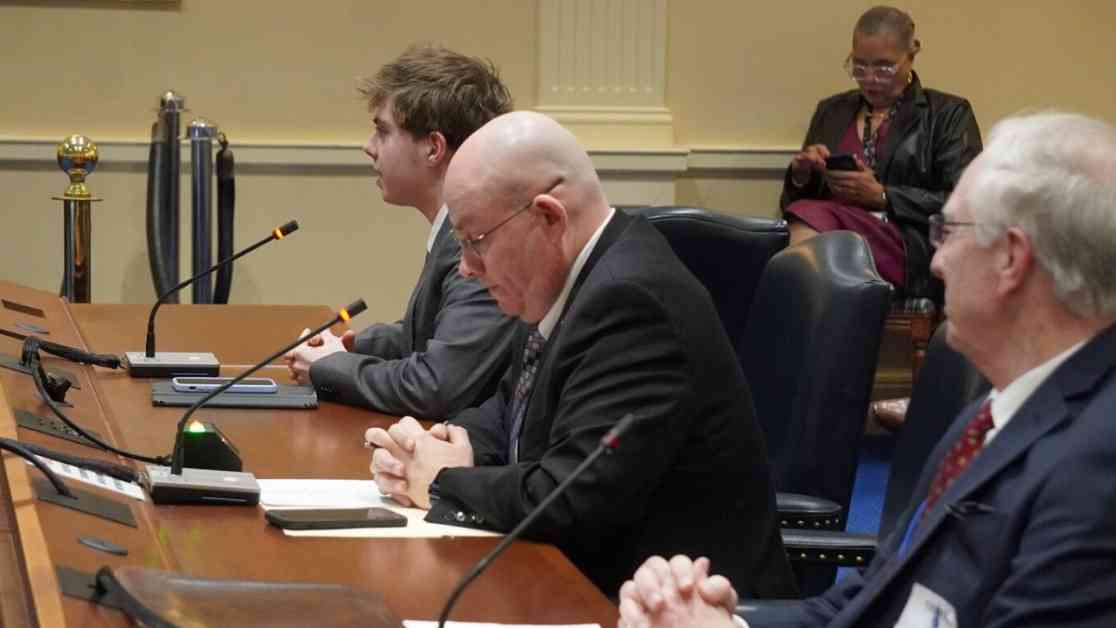Maryland Educational Reform: A Closer Look at the Proposed Statewide School Cell Phone Policy
In the bustling halls of Maryland schools, the debate over student cell phone usage has taken center stage. The heart of the issue lies in the proposed bills that suggest enforcing statewide regulations on cell phone use in schools. While the bills may vary in their specifics, one common thread among them is the need for schools to establish guidelines for students. Del. Nino Mangione (R-Baltimore County) emphasized this necessity, stating, “Our teachers do not need another challenge in our classrooms and do not need any more distractions.”
A recent hearing held by the House Ways and Means Committee shed light on the urgency of this matter. The committee witnessed the impassioned testimonies of various stakeholders, including Mangione, Del. David Fraser-Hildago (D-Montgomery), and James J. York, past president of the Maryland State Medical Society. The proposed bills aim to ensure that all 24 school systems in Maryland have standardized cell phone policies in place.
Proposed Bills and Their Implications
Mangione’s House Bill 192 presents a nuanced approach to cell phone use, allowing high school students to use cell phones during lunch periods while restricting use during school hours, including between classes. Meanwhile, elementary and middle school students would be prohibited from using their cell phones altogether during the school day. The bill outlines a clear disciplinary procedure, with escalating measures for repeat offenders.
On the other hand, Fraser-Hildago’s bill, HB 57, emphasizes the importance of implementing a comprehensive cell phone policy across all grade levels. The policy would permit students to use cell phones during lunch breaks but restrict their usage during instructional time. Additionally, the bill mandates that students store their phones in secure locations when not in use.
During the hearings, two Montgomery County high school students, Jariane Martinez and Peter Boyko, provided a unique perspective on the proposed bills. Martinez, a 10th grader at Seneca Valley High School, highlighted the critical role cell phones play in ensuring school safety. She emphasized the need for students to have access to their phones during emergency situations, such as school shootings, to communicate with their parents and guardians.
Challenges and Considerations Moving Forward
While the proposed bills offer valuable insights into regulating cell phone use in schools, they also raise pertinent questions about the balance between safety and discipline. Del. Vanessa Atterbeary (D-Howard) captured this dilemma, acknowledging the necessity of cell phones for communication while emphasizing the importance of minimizing disruptions during instructional time.
As the debate unfolds, it is crucial to consider the broader implications of these policies on student well-being and academic success. The proposed bills underscore the need for a cohesive statewide approach to cell phone usage in schools, balancing the benefits of technology with the challenges it poses in an educational setting.
In conclusion, the proposed statewide school cell phone policy bills in Maryland signal a pivotal moment in educational reform. By addressing the complex issues surrounding student cell phone usage, these bills aim to create a conducive learning environment while prioritizing student safety and well-being. As stakeholders continue to engage in this dialogue, it is essential to consider the multifaceted impact of these policies on students, teachers, and the broader educational landscape.


















